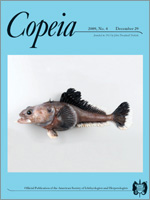Studies on geographic variation in reproductive characteristics can contribute to an understanding of the effects of environmental factors on animal population structure and dynamics. Using a ten-year mark–recapture data set (1994–2003), we studied microgeographic variation in reproductive characteristics (body condition, growth, age to maturity, pregnancy interval, fecundity, and size of offspring) among three Western Rattlesnake (Crotalus oreganus) populations within 40 km of each other. Significant differences existed among snakes from the different den sites in length, body condition, growth rate, fecundity, and size and body condition of offspring. Furthermore, there was a consistent pattern in the variation among populations. Individuals from the population in the most disturbed area, were shorter, had lower body condition, grew slower, had lower fecundity, and had shorter and lower body condition offspring compared to other populations. The results from this study have important applied implications for understanding fine scale variation in reproductive characteristics. This study suggests that some rattlesnake populations have reproductive characteristics that may make them more susceptible to future disturbances.
How to translate text using browser tools
29 December 2009
Microgeographic Variation in Reproductive Characteristics among Western Rattlesnake (Crotalus oreganus) Populations
C. L. Jenkins,
C. R. Peterson,
S. C. Doering,
V. A. Cobb
ACCESS THE FULL ARTICLE





